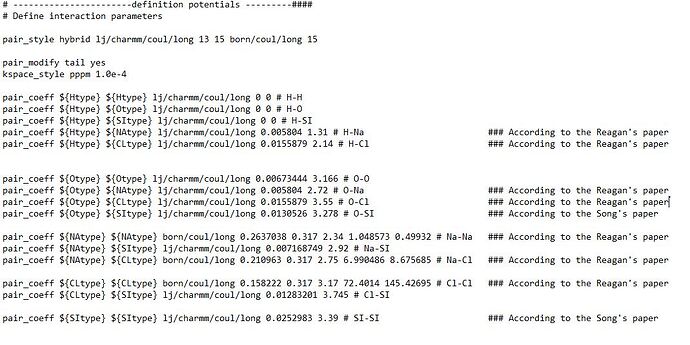Hello everyone. I am currently working on simulating a saltwater droplet on a silicon surface and calculating its contact angle. Initially, I successfully simulated a pure water droplet using the SPC/E water model and obtained an 86.8 contact angle, which aligns with previous studies. However, when adding NaCl salt to the droplet to increase the salt concentration, the contact angle decreased instead of increasing, contrary to what has been reported in the literature. In other words, the droplet spread more on the surface. I think the problem is the interaction parameters I used. The literature uses different Lennard Jones interaction parameters for NaCl, and I have been struggling to determine which parameters are true. For reference, I have attached the papers I used to extract the atom interactions as well as a portion of my input file to provide you with more intuition for my simulation. I would greatly appreciate any assistance in resolving this problem.
I had a similar problem while simulating a pure water droplet because of the different interaction parameters suggested in the literature. Eventually, I could obtain favorable results by using the attached paper (Song’s paper).
song2013.pdf (3.5 MB)
reagan1999.pdf (118.6 KB)
